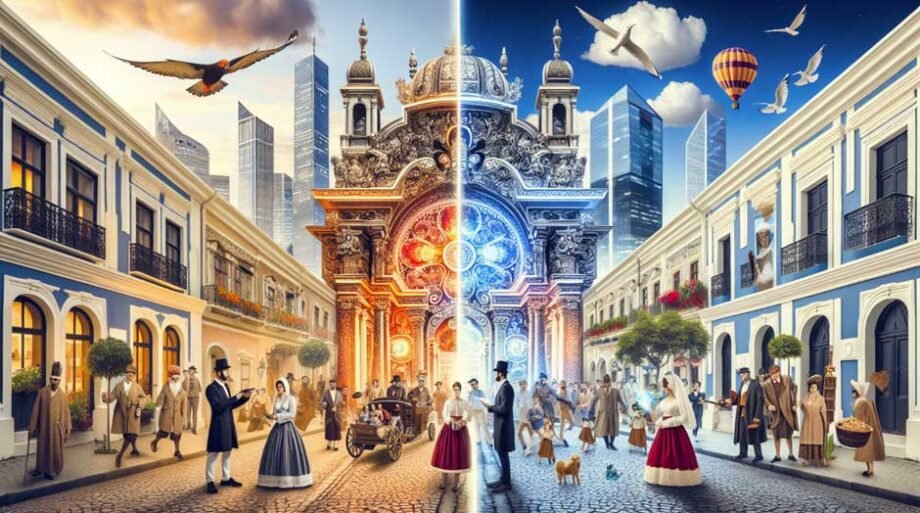Rzinho, originating from Afro-Brazilian communities during the African slave trade era, represents a unique blend of tradition and modernity. This dance form not only combines the fluid and graceful movements characteristic of Brazilian culture but also incorporates a mix of traditional music with contemporary influences, making it a vibrant representation of resilience and creativity. As it evolved, rzinho has come to signify more than just a dance; it has become a digital platform that offers a myriad of outputs, from humorous memes to insightful talks, serving as a creative space for international artists.
The article will explore the evolution of rzinho, detailing its characteristics, styles, and the significant role it plays in popular culture. Additionally, it will delve into the social and cultural impact of rzinho, how it facilitates connections between communities, and its place in learning and practicing arts. Through its journey from a dance form to a broad cultural phenomenon, rzinho exemplifies how traditional elements can seamlessly integrate with modern digital platforms, shaping trends and encouraging a global dialogue on creativity and expression.
Contents
The Evolution of Rzinho
Rzinho has a rich history that traces back to the Afro-Brazilian communities during the era of the African slave trade. This art form began as a synthesis of traditional African dances and indigenous Brazilian rhythms, creating a unique cultural expression that resonates with movement and rhythm. Over time, Rzinho has not only preserved its roots but has also embraced new influences, evolving into a vibrant celebration of Afro-Brazilian heritage.
Throughout Brazil, Rzinho displays a variety of regional interpretations, each adding its unique flavor to the dance. These regional variations reflect the diverse cultural traditions and local customs of Brazil, showcasing how Rzinho adapts and thrives in different cultural landscapes. From the northern regions to the southern parts of Brazil, each interpretation of Rzinho contributes to its rich tapestry, making it a dynamic and ever-evolving art form.
In modern times, Rzinho continues to evolve, influenced by global trends and digital communication. This has led to both challenges and opportunities, with traditional practices being reinterpreted or displaced by new forms. However, there is a growing interest in cultural preservation and authenticity, which has spurred various efforts to document and sustain Rzinho’s legacy. These efforts include intercultural exchanges and support for local artisans, ensuring that Rzinho remains a living, breathing part of Brazil’s cultural identity.
Characteristics and Styles of Rzinho
Rzinho’s dance style is a vibrant tapestry of movements and rhythms that encapsulate the essence of Brazilian culture with a modern twist. Central to this dance form are the dynamic and rhythmic hip movements that not only add a sensual flair but also demonstrate the dancer’s precision and connection to the music’s beat. These hip movements are intricately woven with fluid footwork, showcasing agility and coordination that are hallmarks of Rzinho. The dance is further characterized by its energetic and expressive arm gestures, which serve to convey the emotions and stories inherent in the music.
The attire worn by Rzinho dancers is specifically chosen to complement their movements, with comfortable clothing allowing for unrestricted motion, and dance shoes or sneakers providing the necessary support for intricate footwork. This practicality in dress reflects the dance’s roots in energetic performances and community engagement, where freedom of movement is paramount. The synchronization of dancers, moving in harmony with both the music and each other, highlights the communal aspect of Rzinho, making it not just a dance, but a shared cultural experience.
Rzinho also uniquely blends elements of traditional Brazilian funk with modern influences, creating a dance style that is both fresh and familiar. This fusion is evident in the catchy melodies and dynamic beats that form the backbone of the music, encouraging a lively interaction between the dancers and their audience. The dance’s evolution continues as it incorporates modern elements like hip-hop and electronic music, ensuring that Rzinho remains a relevant and evolving expression of Brazilian culture.
Rzinho in Popular Culture
Rzinho has woven itself into the fabric of popular culture, becoming a significant influence in various artistic and social spheres. It is prominently featured in Brazilian cultural festivals and carnivals, where it brings people together in joyous celebration. This vibrant presence is not confined to local festivities; Rzinho has captivated global audiences with its passionate and expressive moves, making it a beloved feature in international events and cultural showcases.
In mainstream media, Rzinho’s dynamic and energetic performances have found a platform in music videos, movies, and television shows, enhancing its visibility and appeal. This exposure has facilitated Rzinho’s evolution into a cultural phenomenon that transcends traditional boundaries of art and entertainment. The dance form’s adaptability has allowed it to remain relevant in a rapidly changing digital landscape, where it influences trends and shapes consumer behavior across the globe.
Moreover, Rzinho’s impact extends beyond entertainment. It serves as a bridge between traditional Brazilian culture and contemporary global influences, making it a powerful tool for cultural expression and social interaction. Through digital platforms, Rzinho fosters a community that spans continents, offering a space for creative collaboration and cultural exchange. This global community not only celebrates the art form but also contributes to its continuous evolution, ensuring that Rzinho remains at the forefront of cultural trends and artistic innovation.
The Social and Cultural Impact of Rzinho
Rzinho, deeply rooted in Afro-Brazilian heritage, serves as a powerful medium for cultural expression and identity preservation within these communities. By integrating traditional dance with modern rhythms, it maintains a vibrant connection to its cultural origins while adapting to contemporary influences. This dual nature of Rzinho not only celebrates Afro-Brazilian heritage but also challenges and enriches it, ensuring that these cultural narratives continue to thrive and evolve in a modern context.
The community aspect of Rzinho is particularly significant, as it fosters a strong sense of belonging and inclusivity among its participants. Through its communal dance events and online platforms, Rzinho brings together diverse groups, promoting a culture of acceptance and mutual respect. This inclusivity is crucial in a globalized world, where understanding and embracing diversity are key to social harmony. However, the commercialization and cultural appropriation of Rzinho pose ongoing challenges. These issues require careful navigation to preserve the art form’s integrity and its role in cultural expression. The balance between maintaining traditional elements and embracing technological advancements is delicate and necessitates thoughtful consideration to ensure that Rzinho continues to be a positive force in cultural and technological landscapes.
Moreover, the impact of Rzinho extends beyond mere entertainment, influencing various economic sectors through advertising, marketing, and e-commerce. Brands leverage Rzinho’s popularity to shape consumer preferences, demonstrating its significant role in modern marketing strategies. However, this commercial aspect also raises concerns about over-commercialization and the potential dilution of the art form’s cultural significance. As Rzinho continues to evolve, it remains a dynamic symbol of cultural resilience and innovation, reflecting the ongoing dialogue between tradition and modernity in Brazilian society.
Learning and Practicing Rzinho
Practicing Rzinho offers a myriad of health benefits that enhance both physical and mental well-being. Participants enjoy improved flexibility, range of motion, and strength, alongside significant gains in endurance and cardiovascular health. The dance also promotes better coordination and balance, which are crucial not only in performing arts but also in everyday activities. Moreover, engaging in Rzinho provides substantial stress relief and mood enhancement, contributing to overall mental well-being.
Aspiring dancers begin their journey by mastering the basic strokes and progressively moving to more advanced maneuvers. This learning process involves rigorous training under the guidance of experienced instructors who emphasize the importance of mastering intricate footwork, rhythmic patterns, and expressive hip movements. These elements are fundamental to the dance and require dedicated practice to perfect.





